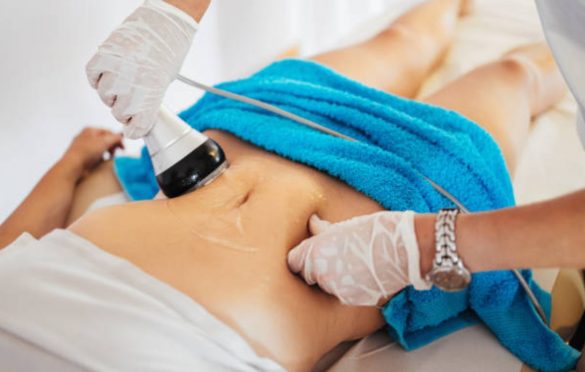How to Recover From Liposuction: A Step-by-Step Guide

Whether you’re trying to slim down for a special occasion or looking to improve your body image, liposuction can effectively target problem areas in your body. However, liposuction has unique risks and side effects because it is surgery.
But by knowing what to expect beforehand and taking proper precautions afterwards, you can help mitigate their impact on your life in the future.
So, suppose you are considering liposuction to improve your body image and reduce physical discomfort in the lower third of your body, but don’t hesitate. To learn more, we have a recovery guide that may help with the steps necessary for recovering.
Keep reading to find out more.
Table of Contents
What Is Liposuction Recovery Like?
Liposuction recovery is a bit more involved than other cosmetic procedures. That’s because, unlike other procedures, liposuction requires the surgeon to access your body and remove fat cells from their natural location to achieve the desired results.
In addition, a liposuction procedure can leave behind various side effects and complications that are unique depending on the patient and the procedure performed. These side effects may include: pain, swelling, bruising, numbness, infection, fluid buildup, skin discoloration, and scarring.
Some patients may also experience a condition called “fatty tissue stasis,” which is a fancy way of saying that the fat removed at times collects at the site of the incision. And some liposuction patients may even experience changes to their skin texture, such as more prominent veins, freckles, and blood vessels.
What Can You Do to Make Your Post Liposuction Recovery Better?
To make your post-liposuction recovery easier, follow your surgeon’s post-procedure instructions and follow your post-surgical recovery rituals and routines closely. It can include:
- Resting: You may have heard that rest is one of the best medicines for speeding up the recovery process post-liposuction. While this is true, it’s essential to understand that there are different types of rest. Your surgeon will likely prescribe a period of rest for your lower body after your liposuction procedure, and you should follow this prescription precisely as written.
- Compression: Compression garments are designed to help reduce inflammation and blood flow in the surrounding area after liposuction and can be extremely helpful. Make sure to follow your surgeon’s instructions on how and when to use compression garments.
- Diet: How you eat post-liposuction can also significantly impact how quickly you recover and how your body responds to the procedure. Make sure to eat a well-balanced, healthy diet to promote healing and recovery as soon as possible.
FAQs
How Long Does It Take to Recover from Liposuction?
In most cases, full recovery from liposuction takes anywhere from one to three months, with six weeks being the average. This is an average and generalization, of course, and will vary from person to person and liposuction site to liposuction site.
Typically, the bigger the operation and the more localized the incision was, the longer the recovery time will be. Smaller incisions and liposuction on non-weight-bearing parts of the body, like the arms and hands, tend to heal much faster than more extensive areas, like the back or abdomen.
Long-Term Tips for The Best Liposuction Recovery
As we’ve mentioned, liposuction is surgery. As such, specific long-term effects are unavoidable. That said, certain lifestyle habits and practices can help reduce your risk of complications and improve your recovery process. These include:
- Eating a healthy diet: Healthy eating promotes healthy living, and it’s a good idea to keep it up post-liposuction. Healthy eating gives your body the energy to heal correctly and promotes good skin health and blood flow.
- Exercising regularly: Regular exercise can help speed up the recovery process post-liposuction and reduce the risk of complications. Exercise does several positive things for the body, including helping to promote better blood flow and boosting the immune system.
- Managing stress: Stress is a natural part of life, but it’s essential to control the amount you’re experiencing properly. High-stress levels can cause all kinds of issues in the body, including slowed healing. Consider consulting a therapist if you can’t reduce your stress level through exercise and other healthy methods.
What Are the Dos and Don’ts After Liposuction?
- After liposuction surgery, wait at least 18 hours before using dangerous machinery.
- Ibuprofen, aspirin, and other NSAIDs should not be taken for at least three days following surgery because NSAIDs can increase the risk of bleeding. You can take Tylenol, or your surgeon will give you a safe pain management plan.
- Unless instructed explicitly by your surgeon, avoid applying topical antibiotics to your incision areas.
- Avoid using hot or cold compresses on the areas that have had liposuction.
- After surgery, you should wait at least seven days before swimming in a pool or ocean or taking a bath to avoid infection.
- After having liposuction surgery, wait 48 hours before consuming alcohol.
- After your operation, don’t immediately make travel plans.
After Liposuction, Is Coffee Okay To Drink?
Along with other fluids of your choice, keep consuming 4-6 glasses of water per day. After surgery, you shouldn’t drink any alcohol, tea, coffee, or fizzy beverages for at least 3 days. NO vegetable juice (V8), athletic drinks (Gatorade), or other salty beverages. Salt will make you swell.


